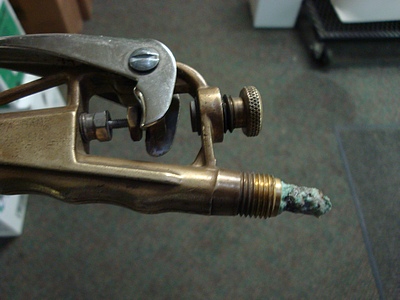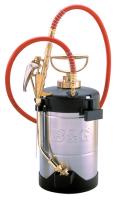B&G Sprayer Parts - Do Your PM During Slow Periods
Posted by Andrew Greess on Nov 12, 2018
A professional who uses his B&G Sprayer cannot afford down time. Use slow winter times to perform your preventative maintenance on your B&G. Reminder: Use only authentic B&G sprayer parts.
B&G Sprayer tips. Do NOT use anything sharp or metal to clean the tip. If the tip is worn, replace it. A new tip is is cheaper than the chemical you will waste using a worn tip. B&G makes a variety of tips for different situations and applications.
4. Clean the filter. Replace filter if it is in bad shape.
5. Take the sprayer apart. Clean everything and replace all wear parts. Here is a partial list of those B&G sprayer parts: check valve, soft seat gasket, cup, packing, o-rings & gaskets.
If your B&G has some significant age on it, consider buying a new B&G and keeping the old one as a backup. If you think you will need a new B&G it is better to buy it before you need it than to be stuck in the field without it.
B&G Sprayers are standard issue pest control equipment. B&G 1 Gallon Sprayers can provide years of reliable service if properly serviced and maintained. Like all spray equipment, you must clean the filter. This photo shows a badly clogged B&G Sprayer filter.

This debris prevented the tech from completing his route.
It is, or should be, the technician's job to maintain his or her B&G in good working order. This includes regular cleaning of filter and other maintenance.
Pest Control Supervisors, Managers and Owners should do a periodic check of technician B&Gs to ensure compliance with proper maintenance policies.
Here are some additional tips for you:

- Make sure your employees understand proper use and maintenance. Periodically review proper procedures because employees forget or look for shortcuts that will cost you money.
- Emergency repair kit. Some parts, such as O-rings and gaskets can be replaced easily in the field. Prepare a small emergency repair kit for each technician so they can perform simple repairs and continue their route.
- Eyes open. Despite the best training, technicians don’t always follow company procedures. Conduct ride-alongs to observe employees’ equipment use in the field. Conduct truck inspections to ensure equipment is maintained properly.
- Proper storage. Make sure trucks are set up to provide a secure sprayer storage. We often see damage caused by sprayers bouncing around, being stepped on or damaged by loose equipment.
- Report it. Make sure technicians are comfortable reporting problems. Too many times we see techs working with equipment that needs service. Instead of asking for help, they push the equipment past the breaking point, turning a small repair into a significant rebuild.
- Track equipment failures to see which parts are failing, which replacement parts should be stocked or which equipment isn’t appropriate for your service program. Track failures by technician to identify training opportunities.

